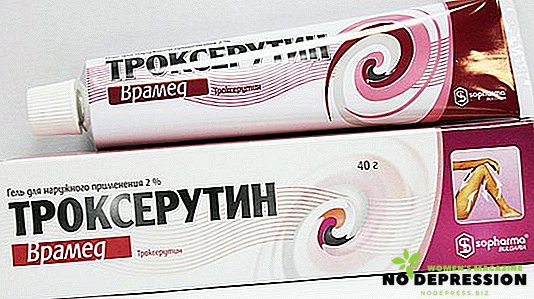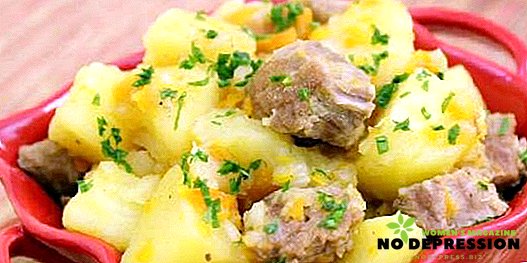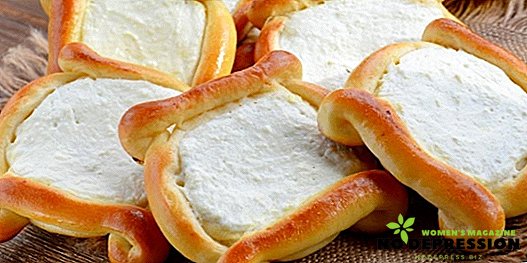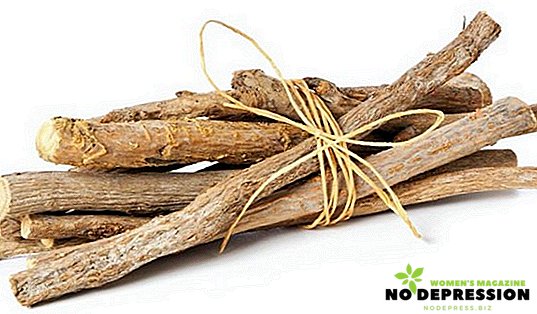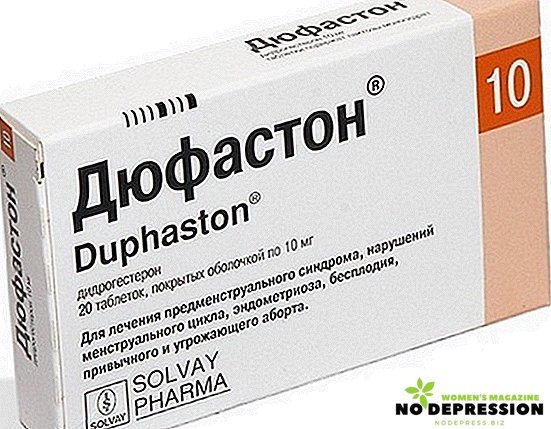Adam root is often called tamus. This is a perennial plant, and it is actively used to treat various diseases associated with joints and blood vessels. It is used both in traditional medicine, and as a component in creams of industrial production.
The root can be found in a wooded area, and it grows not only in European territory, but also in southern Russia and in the foothills of the Karachay-Cherkess Republic. Sometimes this plant can be found on garden grounds. Experienced gardeners use it for decoration. Moreover, the plant discourages pests from the land and greens the terrain.
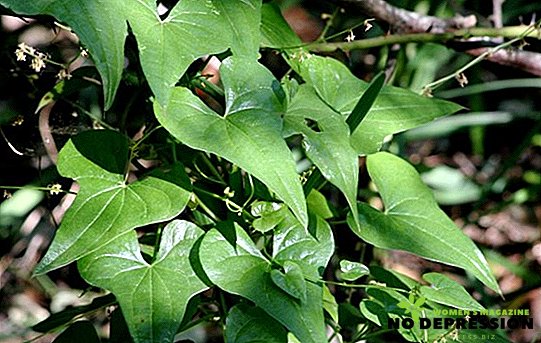
Adam's root description
Adam's root has many names. Most often you can hear the tamus or snake root. It can be purchased at the pharmacy in the form of powdered raw materials. In nature, it resembles a vine with thorns and tendrils, which clings to the trees and braids the trunk. Flowers have a yellowish color with a green tinge. After the plant has faded, dark red fruits with seeds appear. Flowering occurs in spring, but it all depends on the area where it grows.
When an Adam root grows, its stem becomes thick and may have several branches. The root has a maroon-brown color, and inside - juicy and fibrous structure. The leaves are small, with pointed edges, 5-10 cm long. If a person is not sure that there is a tamus in front of him, you need to touch the leaves. They feel rough with sharp edges, and the leaf plate is in the shape of a heart.
Harvesting and storing plants

The leaves are unsuitable for the preparation of medicines, only the root is used. It is necessary to be engaged in preparation during flowering: in April-May. You can perform this procedure in the fall before the leaf fall. During collection, you must take precautions, the leaves can burn the skin, and the root is poisonous. You need to wear tight gloves, pulling the root out of the ground, immediately tear the tops and throw them out. Tamus put in a bag and handle it already at home with rubber gloves.
Digging up an adult root can be difficult. This plant likes stony soil, so the soil is dense. After the tamus has been removed from the ground, it is necessary to thoroughly clean it of the soil, rinse and clean it with a coarse brush. Then it is cut into rings and dried. Drying can be carried out both in a cool room and on the street. It is also possible to store it raw in the refrigerator, but the shelf life is then noticeably reduced.
Therapeutic effect
Adam root is unique in that it contains a large number of biologically active substances.
The most useful components:
 Tannins.
Tannins.- Saponin.
- Pectin.
- Glycosides.
- Essential oils.
- Resins
- Organic acids.
- Alkaloids.
- Slime.
The content of trace elements makes this plant unique. It is indispensable for the treatment of soft tissues, joints and bone tissue.
The main beneficial properties of tamus:
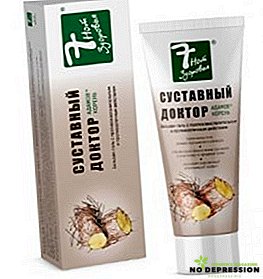 Reduces inflammation and restores the work of the musculoskeletal system.
Reduces inflammation and restores the work of the musculoskeletal system.- It improves blood circulation and improves skin tone at the cellular level.
- It acts as an antiseptic, and an ointment based on this substance can heal wounds.
- Accelerates skin regeneration when tissue is damaged.
- Relieves pain and swelling and works as an antioxidant.
- It relaxes muscles, soothes aching pain in the joints and strengthens the walls of blood vessels.
- Relieves inflammation of nerve endings and bone tissue.
- It has a diuretic effect.
- Delivers minerals into bone tissue and helps recover from injuries and surgeries.
- If a person has sprained a muscle or sprained a limb, then the medicine will relieve the pain syndrome.
Tamus is actively used in traditional medicine. For the preparation of ointments, powders or tinctures do not need special skills. The main thing is to properly collect, dry and follow the recipe.
Use in traditional medicine
Ointment or tincture can be prepared at home. Adam's root can also be used in the form of lotions, compresses and powders. Bruises and bruises can be treated with this drug.
Doctors Tamus is indicated for the following diseases:
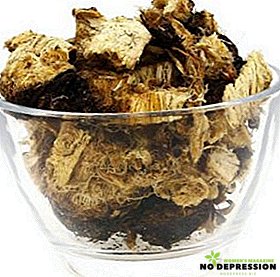 Rheumatism.
Rheumatism.- Sciatica.
- Radiculitis.
- Heel spur.
- Osteochondrosis.
- Gout.
- Arthritis.
- Arthrosis
- Cystitis.
- Bronchitis.
- Pneumonia.
- Stomach disease.
- Thrombosis.
- Warts
- Hemorrhoids.
Adam's root helps with thrombophlebitis. With the help of alcohol tinctures, psoriasis and eczema can be treated. Tamus can brew and make balms of it.
It must be remembered that the root is poisonous and it is necessary to take precautions not only during the collection and harvesting, but also during the preparation of the medicine. If it is not possible to collect personally, then the finished dry product can be purchased without fear at the pharmacy kiosk.
Cooking recipes
The most popular recipes for the production of medicines at home:
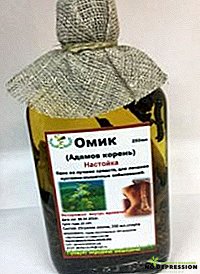 Tincture on vodka or alcohol. For the preparation will need 200 g of dry raw materials. It is poured 0.5 liters of vodka or alcohol. The fluid must be infused for two weeks. Every day you need to shake the container. Due to this, the components will be activated, and the root will give all its beneficial properties to the alcohol compound. After the solution has infused, it must be drained and rubbed on the affected skin before bedtime. After grinding, you need to wear warm clothes.
Tincture on vodka or alcohol. For the preparation will need 200 g of dry raw materials. It is poured 0.5 liters of vodka or alcohol. The fluid must be infused for two weeks. Every day you need to shake the container. Due to this, the components will be activated, and the root will give all its beneficial properties to the alcohol compound. After the solution has infused, it must be drained and rubbed on the affected skin before bedtime. After grinding, you need to wear warm clothes.- Popular recipe in the form of a poultice. To do this, you will need 2 tablespoons of dry raw material, which is filled with hot water. The solution must be tightly closed and allowed to brew for 10 minutes. Later, the water is drained through cheesecloth, and the steamed root is applied to sore skin areas. The procedure can be carried out three times a day.
- Tamus can be taken orally. For the manufacture of the mixture will need 30 g of dry raw materials, 300 g of butter and 1 tablespoon of honey. Reception is shown twice a day, half an hour before meals. Already after the first use, a decrease in the symptoms of diseases is observed.
- Tamus and oil based tincture. To prepare, you must mix 50 g of dry raw materials and half a liter of olive oil. The solution should be infused in the cold for 2 weeks. They can handle bruises and abrasions twice a day. If purchased fresh root, then it must be grated. At the same time, the storage period of the tincture is reduced twice and is 1.5 months.
- To make a lotion for wounds, you need to insist 50 g of chopped Adam root on alcohol, and then dry the rings in the sun. For this recipe, grinding is not required. Rings are applied to fresh wounds. On top of the mandatory impose a sterile bandage.
- Ointment for rubbing. Ointment can be made without additional components in the form of honey and butter. To do this, chop the root and mix with baby cream. Dosage: 1 tablespoon of raw materials to 1 tablespoon of cream. Store strictly in the refrigerator. The container must be tightly closed. Most often used for therapeutic massages, as it helps with inflammation in the joints and relieves pain.
Before you start making and using medicinal ointments and tinctures, you need to consult a doctor. Protect from children and keep out of reach.
Contraindications and recommendations

Like most poisonous substances, Adam root has contraindications. This mainly refers to the dosage during preparation. It is necessary to strictly follow the recipe. Consider those cases where tamus is not recommended for use:
- It is forbidden to use for children up to three years for external use, and internal reception is possible only from 12 years.
- Side effects associated with individual intolerance may occur.
- Tincture can cause allergic reactions.
If a person is allergic or he knows that he has side effects on many drugs, you need to visit a doctor before use, get advice and, if necessary, take tests. Do not exceed the dosage and do not increase the course. If there is no improvement after a weekly application, then it is worth looking for other treatments for treatment.


 Tannins.
Tannins. Reduces inflammation and restores the work of the musculoskeletal system.
Reduces inflammation and restores the work of the musculoskeletal system. Rheumatism.
Rheumatism. Tincture on vodka or alcohol. For the preparation will need 200 g of dry raw materials. It is poured 0.5 liters of vodka or alcohol. The fluid must be infused for two weeks. Every day you need to shake the container. Due to this, the components will be activated, and the root will give all its beneficial properties to the alcohol compound. After the solution has infused, it must be drained and rubbed on the affected skin before bedtime. After grinding, you need to wear warm clothes.
Tincture on vodka or alcohol. For the preparation will need 200 g of dry raw materials. It is poured 0.5 liters of vodka or alcohol. The fluid must be infused for two weeks. Every day you need to shake the container. Due to this, the components will be activated, and the root will give all its beneficial properties to the alcohol compound. After the solution has infused, it must be drained and rubbed on the affected skin before bedtime. After grinding, you need to wear warm clothes.